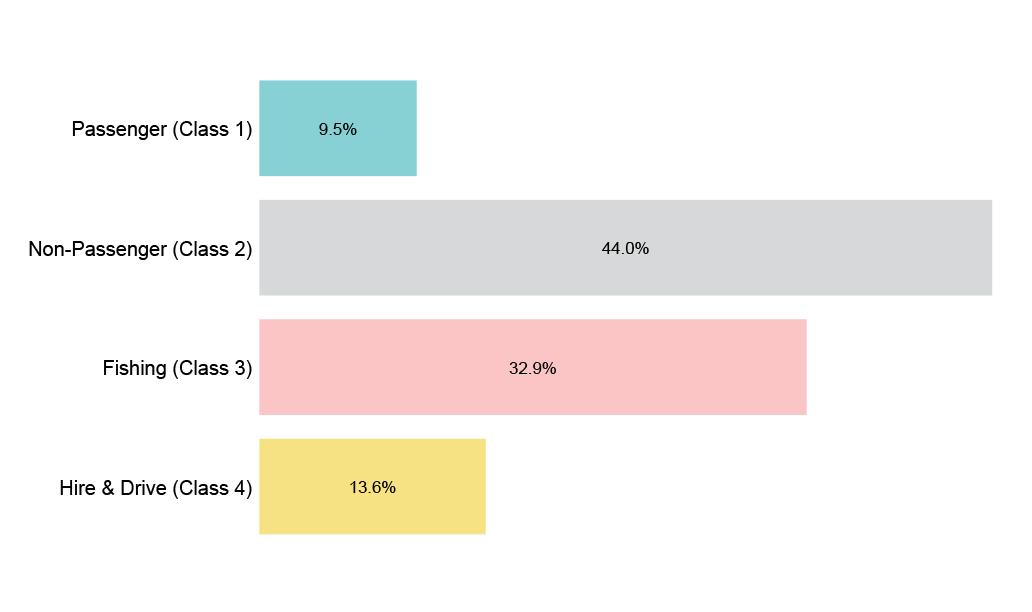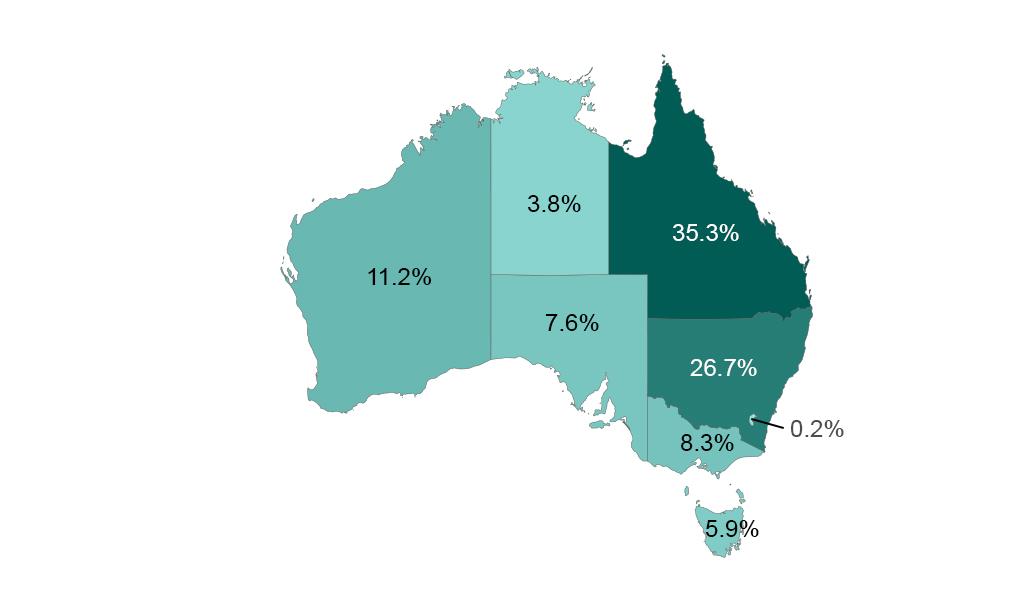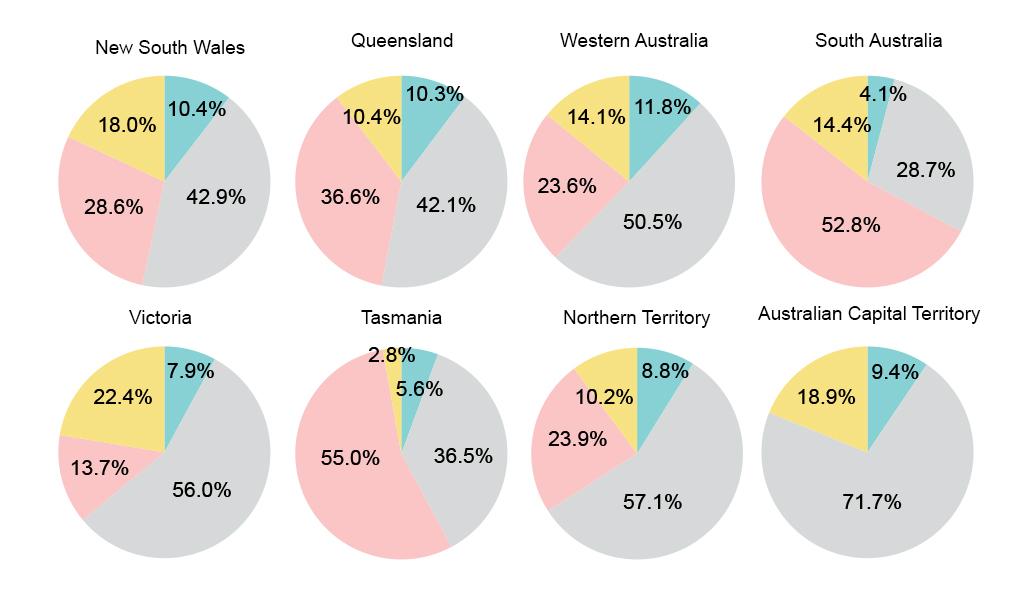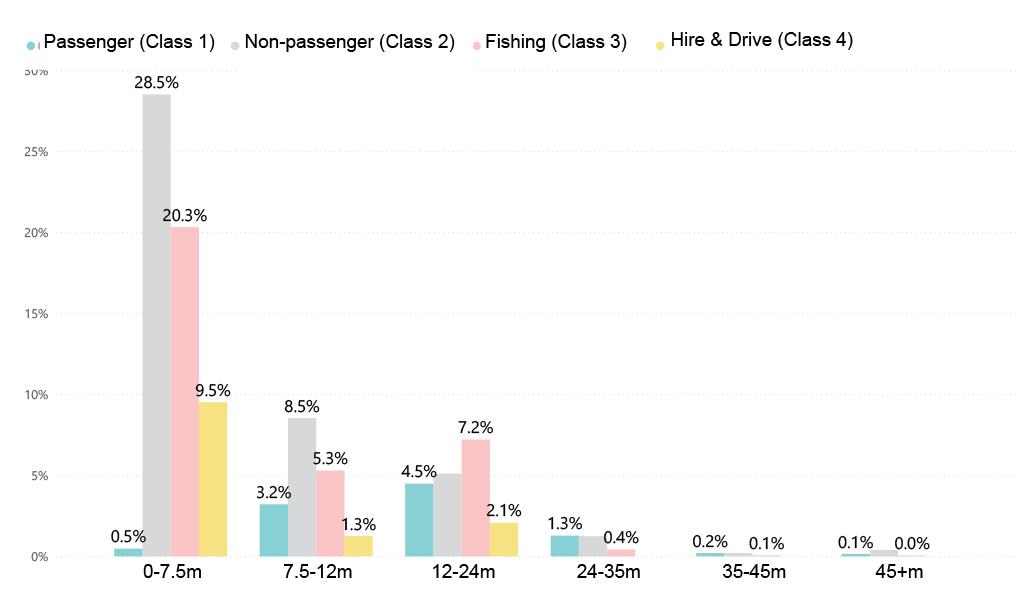Domestic commercial vessels fleet profile
Vessels by class
DCVs operate within Australia’s Exclusive Economic Zone (EEZ) for commercial, research or government purposes and are classed into one of four categories, depending on the vessel’s use.
There are approximately 31,000 active DCVs operating across the four vessel use classes. This includes approximately 7000 human powered and sail vessels. These are primarily hire and drive (Class 4) and under 7.5m in length (such as kayaks). These vessels are excluded from the fleet demographics in the remainder of this report as they are exempt from a unique vessel identifier and are used in connection with recreational activities.
Non-passenger (Class 2) represents the largest proportion of vessels in the DCV fleet, followed by fishing (Class 3) vessels.

Vessels by location (State)
The largest proportion of the DCV fleet with a certificate is located in Queensland (35.3%%) followed by New South Wales (26.7%) and Western Australia (11.2%).


The largest proportion of vessels in each state/territory operate as non-passenger (Class 2), except for South Australia and Tasmania where the largest proportion are fishing (Class 3).
Vessels by length and class
More than half (58.8%) of the active DCV fleet is under 7.5m in length with most being non-passenger (Class 2).

Footnotes
2 Source: AMSA MARS system (May 2021). This data excludes human powered or sail vessels operating that are not uniquely identifiable
3 Source: AMSA MARS system (May 2021). This data excludes human powered or sail vessels operating that are not uniquely identifiable